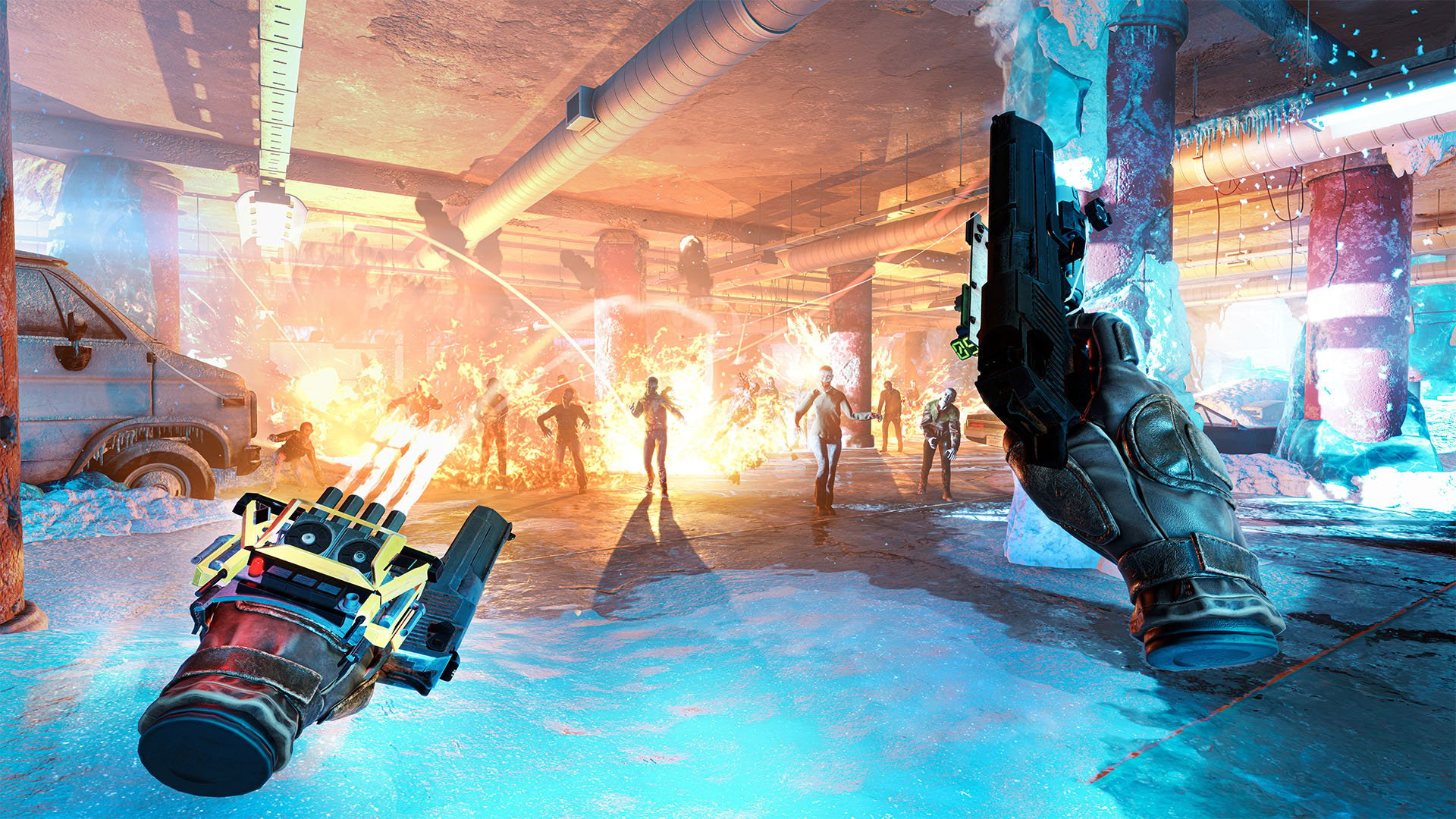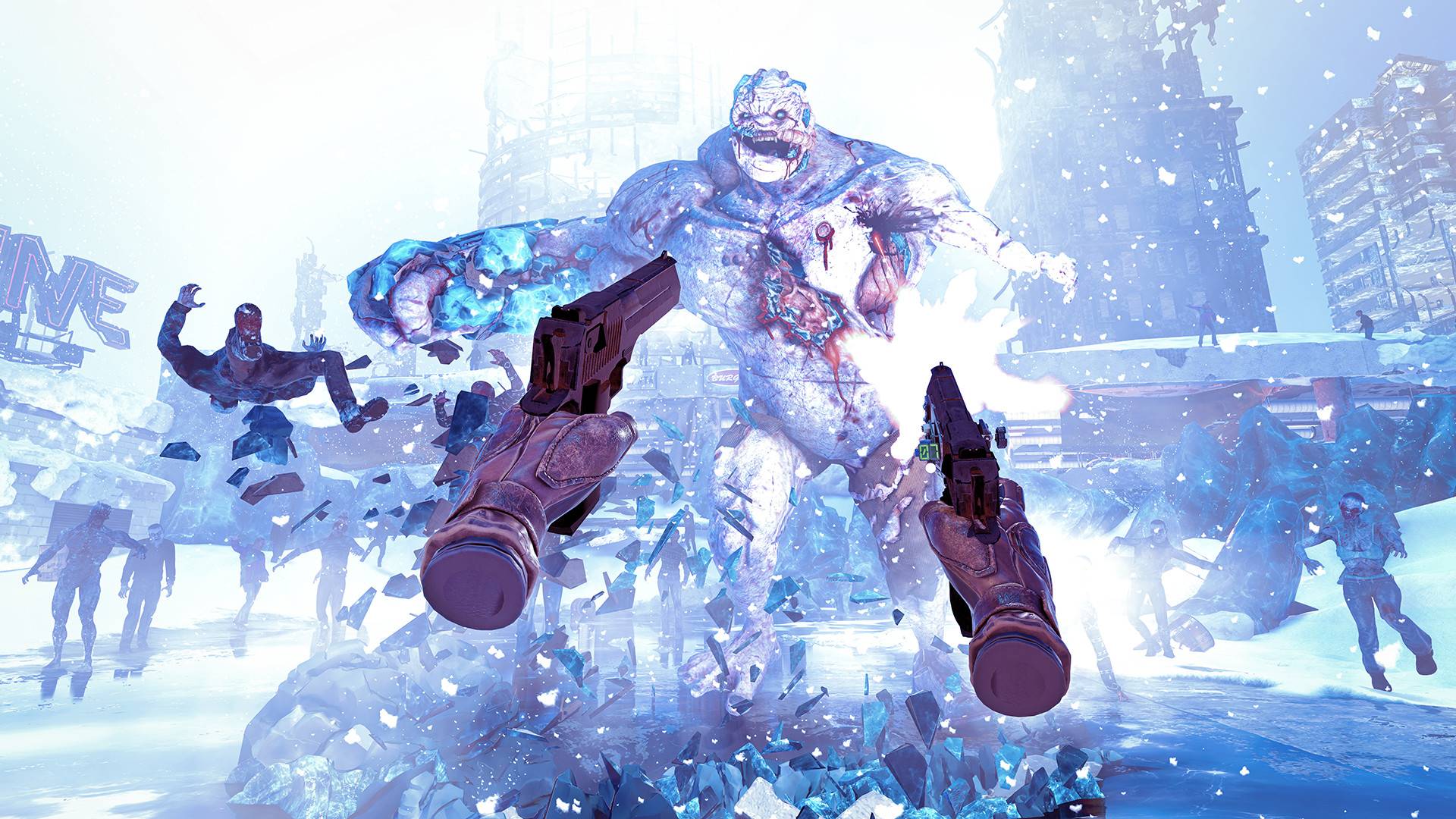
To be honest, co-op shooters are hardly a new thing when it comes to video games, except when they are in VR. Vertigo Games’ zombie shooter Arizona Sunshine has long been one of the preferred co-op VR shooters, so it makes sense that the studio would follow up with a title that firmly captures the VR niche.
After the Fall is yet another zombie shooter that takes a lot of inspiration from its flat-screen companions. It looks and plays like Left 4 Dead or Back 4 Blood, except that it was built for VR from the ground up. After the Fall released on Dec. 9 for all VR platforms, including PSVR and Quest 2. We’ve spent the better part of the last week playing the four-player co-op experience on Quest 2, both natively on the stand-alone headset and on PC via Steam, and we came away simultaneously impressed and slightly concerned.
Okay, I have to do the L4D comparisons. After all, it’s the best association since it executes the same formula: Four players, either human or bot, grab some guns and run through a mostly linear level to shoot zombies (Snowbreed) and harvest dropped currency while scavenging for items or collectibles to unlock weapon upgrades. AtF wraps the game into a slightly modified zombie scenario where the world is caught knee-deep in an ice age that also prompted the appearance of Snowbreed.

As one of the few remaining survivors, you live in an abandoned subway station underneath 1980s Los Angeles. You only leave the safety of “The Line” for harvest runs in one of the five co-op maps that are available at launch. It’s not wholly original, but adding an ice age and the ’80s into the mix is an interesting idea.
Sadly, AtF does little with it in the story and visual style. Characters are well voiced, but the interactions are little more than some simple exposition via dialog. You do not choose your character skin in the game, but you’ll always play as a random character on the team, which also has a few dialogue lines that are dropped during matches. It’s better than silence when you’re playing with bots, but even then, you’ll likely hear the same repeated lines as soon as you’re three matches deep.
However, let’s be honest, you’re probably not playing AtF for the deep lore and storytelling but to shoot decaying humanoid monsters in the face. It does that very well.

Players start their journey with a standard service weapon, which already packs a punch. At launch, there are six guns across the usual range of firearms: two types of handguns, an Uzi, two rifles, and a shotgun. The pickings are slim, but there’s some great gameplay flexibility. You can carry four guns: two in the holster (or weapon wheel, if that’s comfortable) and two in each hand. The best thing about this system isn’t that you can quickly swap between guns or dual-wield different guns. The game doesn’t require you to let go of the firearm you’re holding if you want to grab anything, so you can grip a two-handed rifle while technically holding a gun in the other hand, or you can store an item (like a pipe bomb) in one of the two item slots.
Luckily, the game’s levels are built well for VR, with lots of interactions and weapons that simulate a realistic amount of weight. There are some rare levers to activate and zip lines to zip down, but the medium should’ve allowed the developers to get more creative. You’re able to throw weapons and items to your teammates if needed, but the necessity is pretty limited. VR-wise, I like the shooting range the most because you can physically dismantle and reassemble weapons with earned attachments. It’s a solid addition, but I have seen better implementations of similar systems in other games.
However, each level follows roughly the same setup with some minor variations. Run into a new area, kill everything that moves, look out for collectibles, and carry on. There are two to three safe rooms per level that can be used to buy items and heal. Even though it’s a zombie shooter, AtF isn’t necessarily a survival shooter. Ammunition is usually nearby when you need it, with boxes that can be shot from afar to replenish ammo. You don’t want to get caught without ammo in a group of Snowbreed, so your survival depends on opening the boxes regularly.
When it comes to the game’s zombies, there’s some variety, but everything still feels fairly limited at this stage. Regular zombies come in slow and fast variants, each with optional ice shielding on certain body parts. Special Snowbreeds are thrown into the mix but don’t deviate far from the genre norm: Big “Boomers” that explode, Juggernauts that are tanks that one-shot anyone they can grab, a charging heavy-armored zombie, and a towering zombie with multiple hit zones. The latter boss variant is used in almost every level as the final encounter, and that quickly gets old.

When you compare this to other shooters of its kind, AtF does a decent job of alternating and randomizing spawn points and intensity, and that can keep things interesting for a while. Progression is not very pronounced yet. There are floppy discs hidden throughout each area, and based on the difficulty level, they reward you with rarer weapon attachments. On top of that, if you win a match, you get to keep all items on your body, including found weapons. This is neat but further devalues the need to earn currency, since you already earn more currency than you’re able to spend.
RATING: 7/10